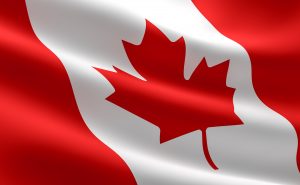
Canadian government officially adds plastic products to its list of “toxic” substances
Canadian Plastics
Canadian PlasticsThe designation is already drawing sharp criticism from industry associations.

Photo Credit: md3d/Adobe Stock
The Canadian government has officially added “plastic manufactured items” to its list of “toxic” substances on Schedule 1 of the Canadian Environmental Protection Act (CEPA).
The move, announced on May 12, was first proposed by the federal government last October.
While drawing praise from some environmental groups, industry associations, including the Ottawa-based Chemistry Industry Association of Canada (CIAC), expressed disappointment with the announcement. “We remain concerned that today’s decision sends the wrong message to global chemistry investors, namely that Canada is ambivalent about the enormous investment prospects for the circular economy for plastics,” CIAC said in a May 12 statement. “[We’re] disappointed that safe inert plastic materials that play such important roles in Canadians lives are being labelled as toxic substances.”
CIAC also said it would keep working toward extended producer responsibility systems in all provinces and advocate for better recycling access and stronger technology around mechanical and chemical, or advanced, recycling. “By making plastics completely recyclable and transforming waste into new plastic items and other products, we can help Canada realize its goal of zero plastic waste,” said Elena Mantagaris, vice president of CIAC’s plastics division.
And in the U.S., the American Chemistry Council (ACC) said in a statement that a CEPA listing is misleading and counterproductive. “Banning efficient plastic products will likely lead to forced substitutions with alternatives that increase greenhouse gas emissions and prevent the transition to a low-carbon future,” Joshua Baca, vice president of plastics with the ACC, said in a May 12 statement.
And the Washington, D.C.-based Plastics Industry Association weighed in with its own criticism. “Our two countries are powerful plastics economies,” said president and CEO Tony Radoszewski on May 13. “This development is a symbolic gesture to activists and threatens tens of billions of dollars of commerce. The idea that plastic is toxic is the true danger. Such a label could have ramifications far beyond some single-use items. It could fast-track more bans on other consumer products that are fully recyclable. Our main concern should be improving recycling.”
Industry opposition to the CEPA designation is not new. In December 2020, two months after the government announced its intention, Calgary-based Nova Chemicals Corp. filed a formal objection on the grounds that plastic manufactured items are not “toxic” within the meaning of CEPA, nor according to a recent science assessment. “The assessment made no mention of plastic manufactured items causing harm to biota or the environment,” Nova said. “The potential harm identified in the science assessment relates only to a handful of specific macroplastic items…[and instead] the proposed listing is of a category (Plastic Manufactured Items), which would contain every product manufactured from plastic in Canada. This category…was not addressed in the science assessment.” Nova went on to add that a “toxic” designation “would blur the line with those substances that are truly toxic and are properly managed under CEPA Schedule 1.”
Also in December 2020, the Plastics Industry Association filed its own formal objection with the Canadian government, arguing that the listing would amount to a technical barrier to trade that violates World Trade Organization rules and a violation of the “spirit of cooperation” in the United States-Mexico-Canada Agreement on trade. It also noted that the COVID-19 pandemic “has reinforced that plastic products, whether it be in healthcare or food service, have been essential to survival during this uncertain time.”
